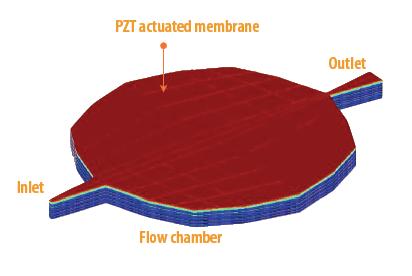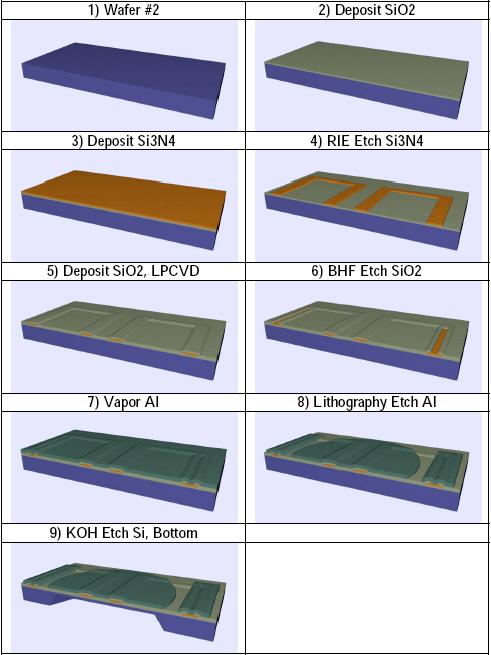FabViewer is a new module in IntelliSense’s Clean Room suite of process simulation and visualization tools. After building up a process flow in IntelliFab, users can visualize the process simulation and final MEMS device in FabViewer. High-resolution JPEGs and movie files are easy to export for use in technical papers and presenations. A dynamic cross-sectioning feature allows for easy process debugging or failure analyses. Shown below is a cross-section of a device constructed with FabViewer.
- About Academia CAD Clean Room etch simulation FABViewer fluid-structure interaction IntelliEtch IntelliFAB IntelliSuite Lectures MEMS Papers PiezoMEMS Process Simulation Research Software Synple System Simulation
-
Recent Posts
Top Posts
- Process visualization in Clean Room
- Introducing IntelliEtch
- Fluid-structure interaction in IntelliSuite
- Developing a microresonator in IntelliSuite
- Industry sponsorships at UCSC MEMS Design Course
- RECIPE 3D - RIE/ICP etch simulator
- IntelliSuite at Cambridge
- Nankai University's application of Clean Room
- 3D System Visualization in SYNPLE
- IntelliSuite v8.5 Official Release
Categories








You must be logged in to post a comment.